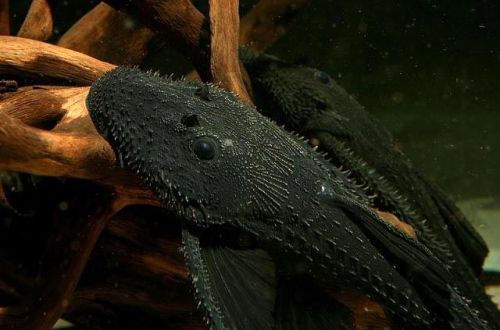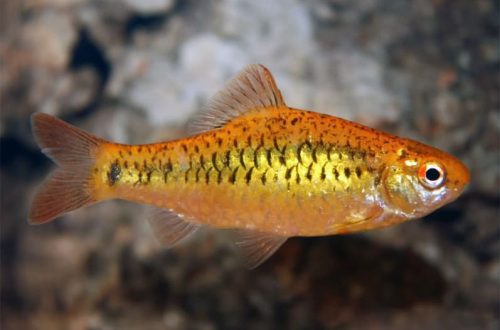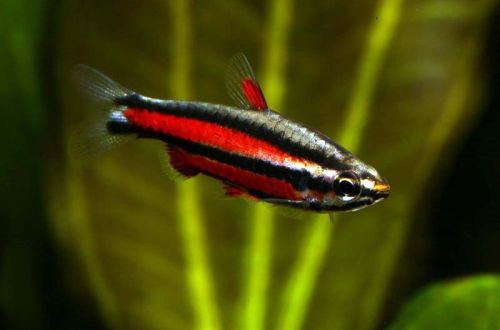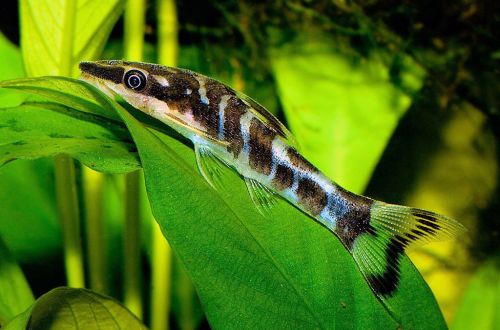
Acanthicus hystrix
Acanthicus hystrix, scientific name Acanthicus hystrix, belongs to the family Loricariidae (Mail catfish). Due to its size and behavior, it is not recommended for beginner aquarists. Typically used in large private and public aquariums. However, young catfish are often commercially available and can be problematic as they grow.

Contents
Habitat
Comes from South America. There is no exact information about the true distribution area of this type of catfish, and in the literature the type of area is indicated as the Amazon River. According to a number of sources, the fish is widely distributed throughout the Amazon in Brazil and Peru, as well as in nearby large river systems, such as the Orinoco in Venezuela. Prefers sections of rivers with a slow current. Often recorded near settlements located along the coast. Presumably, this is due to the abundance of food leftovers poured by local residents directly into the rivers.
Brief information:
- The volume of the aquarium – from 1000 liters.
- Temperature – 23-30°C
- Value pH — 6.0–7.5
- Water hardness – 2–15 dGH
- Substrate type – any
- Lighting – subdued
- Brackish water – no
- Water movement – light or moderate
- The size of the fish is 50–60 cm.
- Food – any food
- Temperament – quarrelsome
- Single content
Description
Adults reach 50–60 cm in length. The fish has a massive body with a large head and large fins, the first rays of which are noticeably thicker than the others, being something like spikes. The whole body is dotted with many sharp spines. All this is designed to protect the catfish from the numerous predators of the Amazon. The coloring is black. Sexual dimorphism is weakly expressed, there are no visible differences between male and female.
Food
An omnivorous and rather voracious species. It eats everything it can find at the bottom. The diet can consist of a wide variety of products: dry sinking food, live or frozen bloodworms, earthworms, pieces of shrimp meat, mussels, a variety of vegetables and fruits. Feed daily. Obvious signs of malnutrition are a sunken abdomen and eyes.
Maintenance and care, arrangement of the aquarium
For one adult, an aquarium of a thousand liters is required. Acanthicus histrix prefers subdued lighting levels and needs plenty of appropriately sized hiding places. Caves and grottoes are formed from snags, fragments of rocks, large stones, or decorative items or ordinary PVC pipes. The presence of aquatic plants is not necessary, as they will soon be uprooted and eaten.
High water quality is ensured by an efficient filtration system and regular maintenance of the aquarium. Maintaining high levels of dissolved oxygen is essential, so extra aeration comes in handy.
Behavior and Compatibility
Young catfish are peaceful and often found in groups. However, as they grow older, the behavior changes, Acanthicus become more aggressive and territorial, so they should be alone. Compatible exclusively with other large fish that live in the water column or near the surface.
Breeding / breeding
Not bred in an artificial environment. In nature, spawning occurs during the rainy season in caves dug on steep river banks. At the end of spawning, the male drives the female away and stays with the clutch to protect her until the fry appear.
Fish diseases
The cause of most diseases is unsuitable conditions of detention. A stable habitat will be the key to successful keeping. In the event of symptoms of the disease, first of all, the quality of the water should be checked and, if deviations are found, measures should be taken to correct the situation. If symptoms persist or even worsen, medical treatment will be required. Read more about symptoms and treatments in the Aquarium Fish Diseases section.





